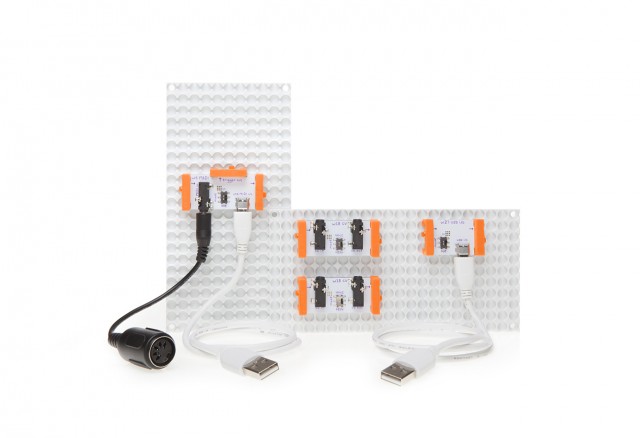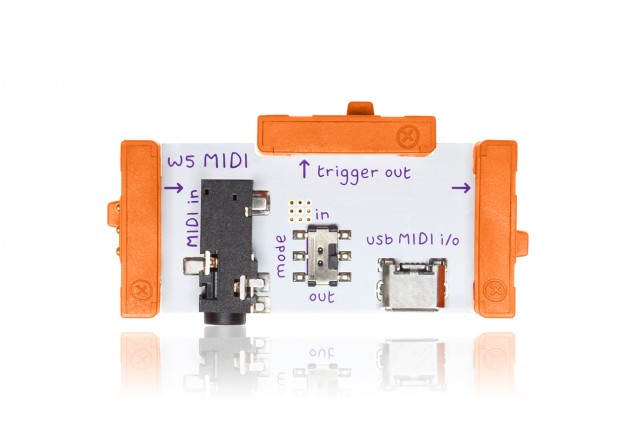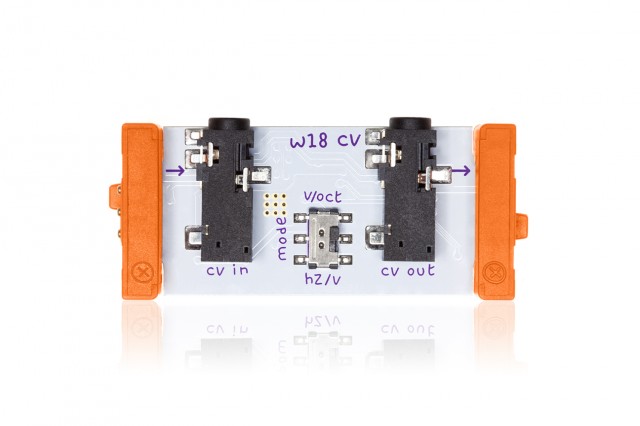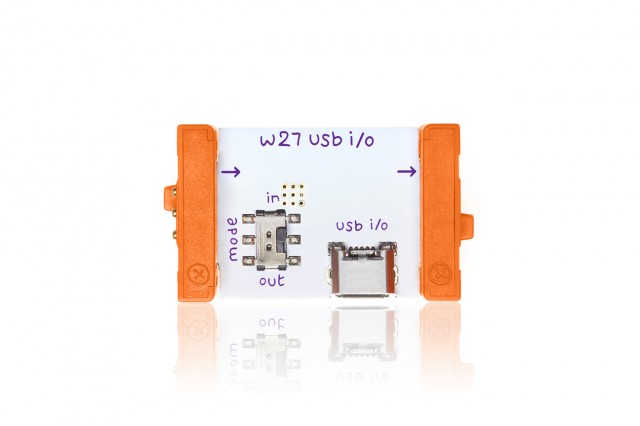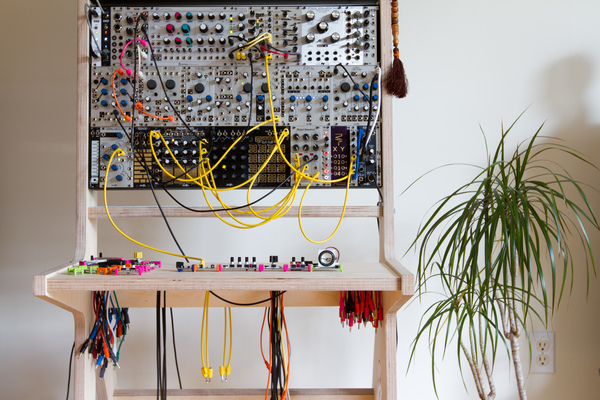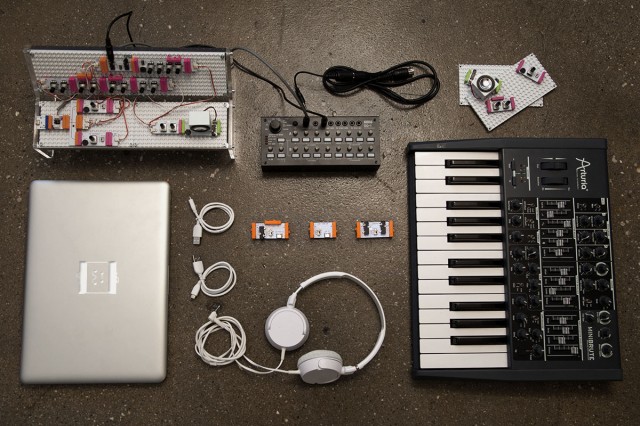littleBits’ Synth Kit began as a lot of fun. Snap together small bare boards connected by custom magnets, and you can create basic synthesizers, or mix and match more exotic littleBits modules light light sensors. No soldering or cable connections are required.
But while you could use various littleBits components, your options were comparatively limited as far as connecting to other gear. That changes today with the release of new modules for MIDI, USB, and analog Control Voltage (CV), ranging $35-40 each.
There are three modules, each made in collaboration with KORG:
You can also buy a US$139.95 “Synth Pro Pack” that includes two of the CV modules, a MIDI module, a USB module, mounting boards, and cables.
Let’s look at the modules one by one, then see what they can do:
Costs US$39.95. This is the most useful of the three, to me, and the easiest no-brainer purchase if you’ve got a Synth Kit. You can route MIDI in and out of a littleBits rig to any other MIDI hardware – though you have to choose one or the other, by setting the single minijack to either “in” or “out.” And you can run MIDI in and out over micro USB to a computer. (The module operates driver-free, or you can install an optional driver from KORG – probably only if you’re on Windows would you want to do that.)
In effect, this module also works as a littleBits CV-to-MIDI converter, translating any analog input from a module to MIDI messages.
Applications: you can now use littleBits sensors or sequencers to play any MIDI instrument. Or you can play your littleBits rig using a MIDI controller or your computer sequencer.
Cost: US$34.95. The CV module is basically the same idea, but with CV instead of MIDI. It couldn’t be simpler: you get one CV in, one out. Remember that CV connection for “littleBits” on KORG’s SQ-1 sequencer? Now we get to see it in action.
Now, because littleBits is already built around control voltages, this is a bit of fun. littleBits modules become a toolkit of various sensors and the like, as outputs to gear. And anything you have that generates control voltage – like a modular rig, for instance – now can be used to play synths you build with littleBits. Of the two, I suspect the former is more interesting than the latter, just because if you have a modular rig already, you can build something quite a lot more interesting and powerful than with littleBits. On the other hand, littleBits has all sorts of interesting motors and sensors, and if you don’t want to muck around with Arduino and the like, you can now snap together some strange sensors and quickly connect them to your modular rig with a $35 module.
Costs US$34.95. USB I/O handles just audio. But you can both route audio from your computer and to your computer. That makes it easier to record what you’ve made with your Synth Kit, if you don’t have an audio interface handy.
Also, because you can use an audio stream for control voltage, you can use the USB I/O kit to control modules.
So, in other words: the MIDI and I/O modules make it easier to integrate synths you’ve built with your computer and/or MIDI gear. The CV module I think will be most useful as a way of making strange new inputs for a modular synth.
Also interesting: today, littleBits has a bunch of partner videos showing off how these modules interoperate with other products. For instance, here’s Tony Rolando, of modular maker MakeNoise:
Or Peter Speer, showing some ideas for how to build interesting synths:
Patch ideas with the new littleBits Synth modules from Peter Speer on Vimeo.
Lysandre Follet shows how you might add a littleBits synth instrument to a larger Eurorack modular setup:
Icaro Ferre from Spectro Audio uses his software CV Toolkit to demonstrate how that powerful tool can be used to control other gear via CV. And… well, really, this is relevant to anyone interested in that software whether or not you want to use it with littleBits:
Cycling ’74 shows what they can do with Max/MSP:
Here’s a video Theremin:
And here’s the application I thought was sort of most cool, which is using the littleBits sensor modules to quickly interface with software:
More information:
Introducing: MIDI, CV, and USB I/O [littleBits Blog]
Bonus: It has nothing to do with littleBits – though it’s relevant to DIY. I love this DIY bow interface created by Peter Speer, which I stumbled across again while looking at him:
Euro bow interface prototype from Peter Speer on Vimeo.

